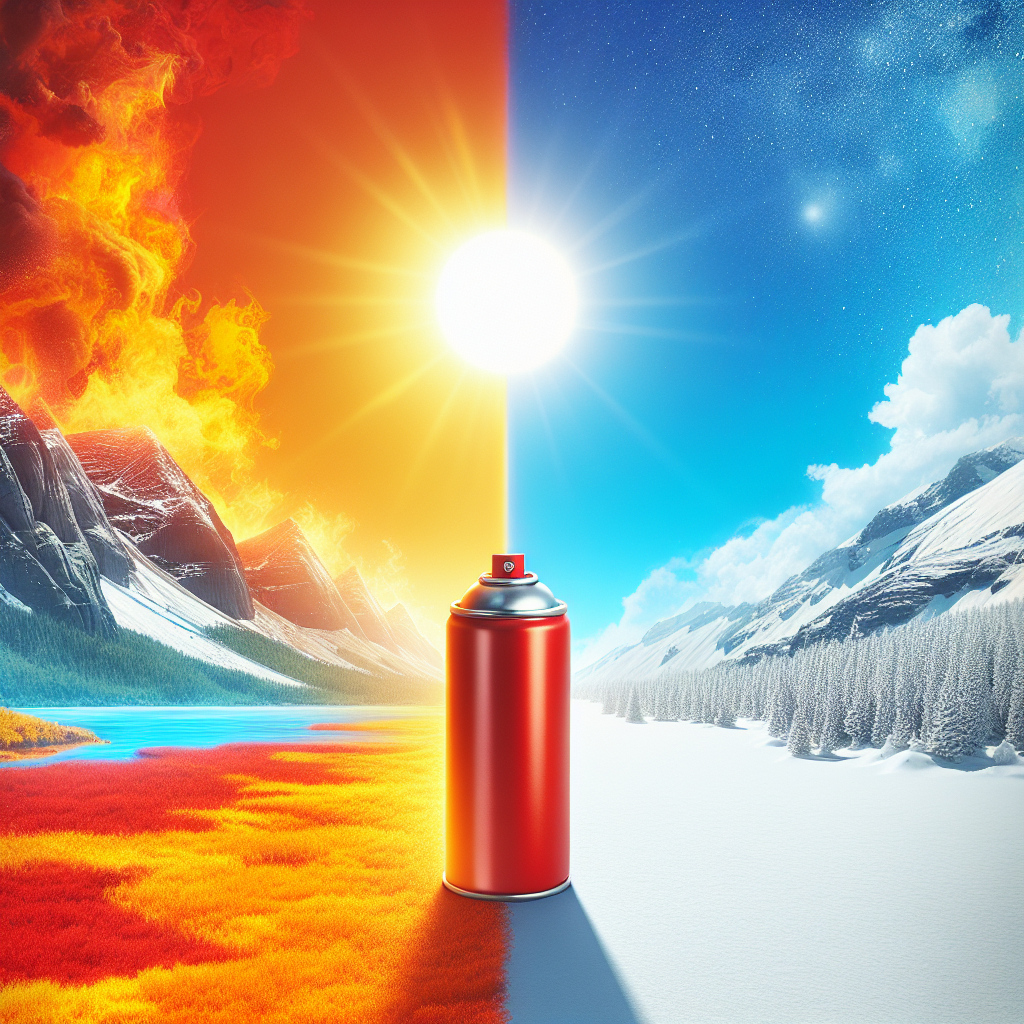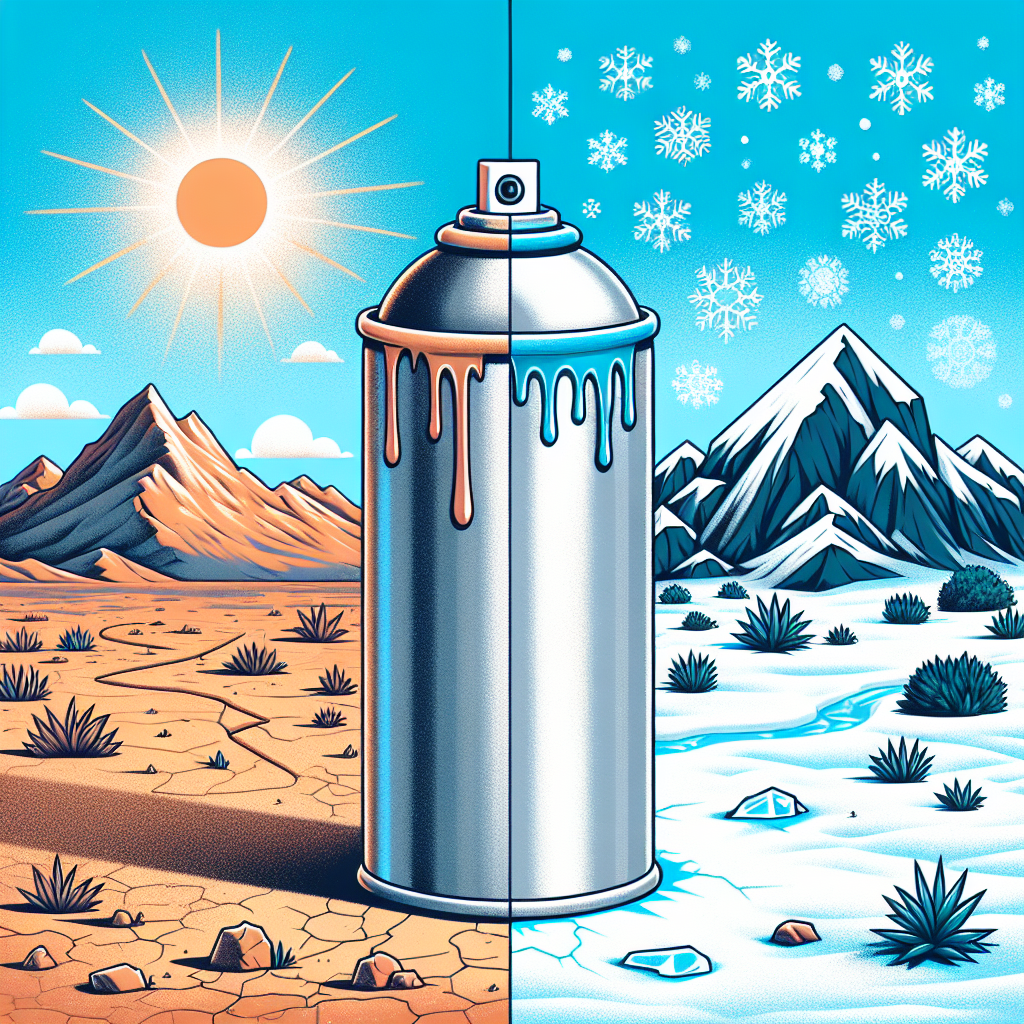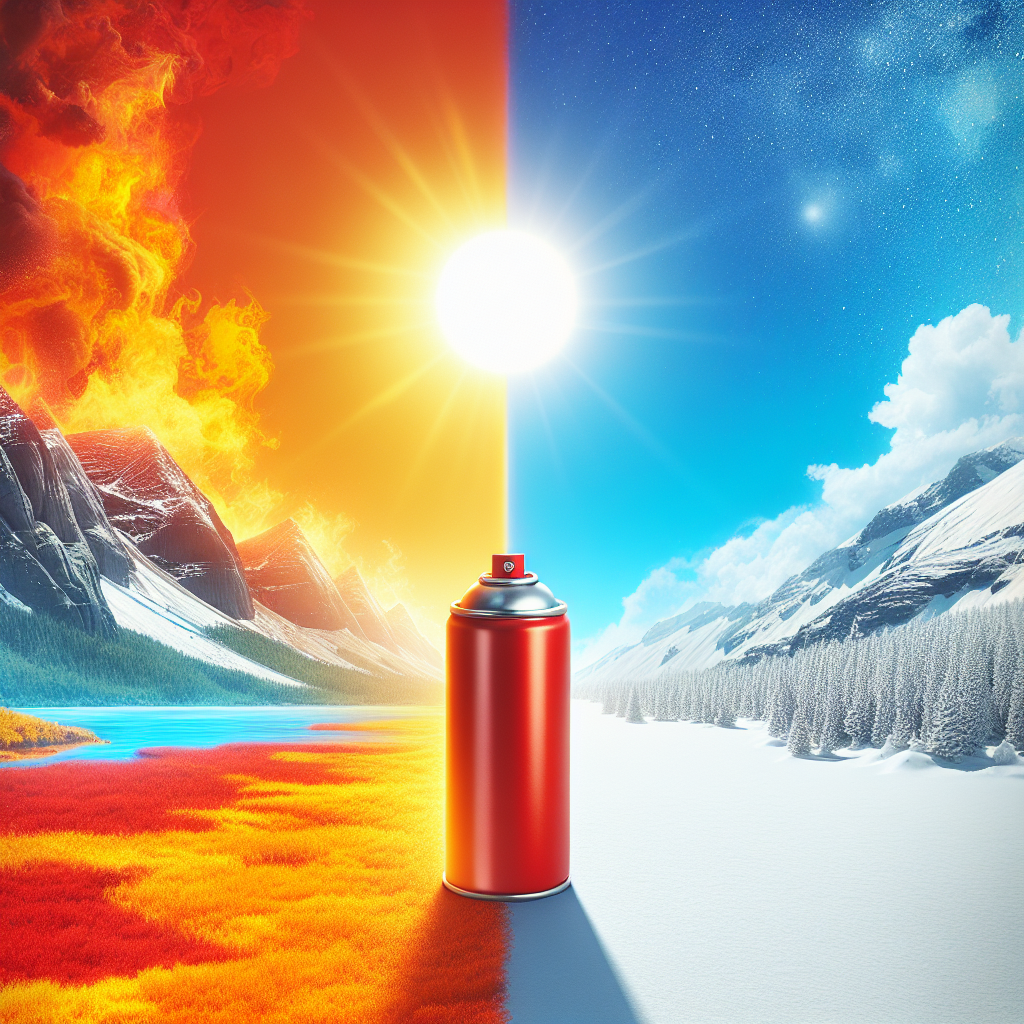Embarking on a new spray painting project? You’re probably wondering “Does Spray Paint Dry Faster In Heat Or Cold”? If you’ve been puzzled by this question, you’re not alone. This article is all set to explore how temperature conditions can dramatically affect the drying time of your spray paint. Let’s demystify this exciting art form together and enhance your spray painting adventure!
Factors Affecting Spray Paint Drying Time
Spray painting is a handy tool to add color or glam to any surface. There are many factors that you, as a painter, would need to consider when dealing with the drying time of your spray paint. These include the spray paint’s composition, environmental conditions, the surface materials, and the techniques you use during the application.
Composition of Spray Paint
The make-up of your spray paint plays a crucial role in its drying time. Generally, standard spray paints are solvent-based, which means the paint contains chemicals that evaporate once the paint is applied, allowing the paint to dry. However, the specific chemicals used and their proportions can affect how quickly the paint dries. For example, paints with fewer solvents will take longer to dry since there are fewer substances to evaporate.
Environmental Conditions
Your working environment also significantly impacts the drying time of your spray paint. Certain environmental conditions, like temperature, humidity, and airflow, can either speed up or slow down drying. For example, warmer temperatures speed up the paint drying process, while cold temperatures delay it. High humidity levels can also slow down the drying process, as high moisture content in the air can prevent the paint’s solvents from evaporating.
Surface Material
The material of the surface you’re painting can also impact drying time. Some materials, like metal or plastic, allow for faster drying times due to their non-porous nature. On the other hand, porous materials, such as wood, absorb the paint’s solvents, slowing down the drying process.
Application Technique
Your application method can affect the spray paint’s drying time. If the paint is applied in a thick, heavy layer, it will take longer to dry. On the other hand, if you apply multiple thin layers, allowing each layer to dry before applying the next, your paint can dry more quickly and evenly.
Effect of Temperature on Spray Paint Drying Time
Temperature conditions are crucial, and it’s good to understand how varying levels of heat or cold can impact your spray paint drying time.
How Heat Affects Spray Paint Drying
Hot conditions will indeed speed up your spray paint drying time. The heat provides energy that increases the speed at which the solvents in the paint evaporate, thus allowing the paint to dry faster. However, if the temperature is too high, it could cause the paint to dry too quickly, leading to an undesirable finish.
How Cold Affects Spray Paint Drying
Cold conditions, on the other hand, prolong the drying time of your spray paint. The reduced temperatures slow down the rate of solvent evaporation. As such, it is generally not recommended to spray paint in very cold conditions as it would take much longer for the paint to dry.
Relationship Between Temperature and Drying Time
The correlation between temperature and drying time is generally linear: the higher the temperature, the faster the paint dries, and vice versa. Therefore, choosing an optimal temperature for your painting work is essential to achieve the most efficient drying time.

Other Factors to Consider
Aside from temperature, there are a few more factors you should consider that could influence your spray paint’s drying time.
Humidity
High humidity can significantly slow down the drying time of your spray paint. The moisture in the air prevents the paint’s solvents from evaporating as readily as they would in a dry climate, thus slowing down the drying process.
Air Circulation
Good air circulation can help speed up the evaporation of the solvents in your spray paint. By ensuring there’s a steady flow of fresh air in your workspace, you can help accelerate the drying process. However, be careful not to allow too strong a breeze, as it could disrupt the application of your paint.
Thickness of Paint Coating
The thickness of your paint application also plays a big role in drying time. Thick layers of paint will take longer to dry completely, while thin layers dry faster. As such, it’s often suggested to apply multiple thin layers of paint, allowing each to dry before adding the next, rather than one thick layer.
Type of Spray Paint
Finally, the type of spray paint you use can impact the drying time. Different kinds of paint (enamel, lacquer, acrylic, etc.) come with different drying times due to their distinct compositions. Make sure you understand the properties of the specific paint type you’re using for your project.
Practical Tips for Faster Drying
Now that you know the factors that affect your spray paint’s drying time, here are some practical tips to help you boost the process.
Ideal Temperature and Humidity
Generally, an ideal temperature for spray painting is around 70–75°F (21–24°C), and a low to moderate humidity level (between 40–50%RH). This provides the optimal environment for the solvent evaporation process.
Choosing the Right Spray Paint
Select a spray paint that suits your project’s needs and requirements. If you need to speed up the drying process, opt for brands that offer quick-drying formulas.
Proper Surface Preparation
Prepping your surface correctly can also impact the drying process. Ensure that your surface is clean, dry, and sanded (if necessary). These steps enable the smooth application of paint and allow the solvents to evaporate quickly, thus speeding up drying
Thin Coating Layers
Finally, aim to apply thin, even layers of paint, allowing each to dry before applying the next. This method is much more effective and efficient compared to applying a single, thick layer of paint.
By understanding and applying these factors and tips, you can highly influence the drying time of your paint and ensure a smooth and successful painting process. Happy Painting!




